Planetary Science
-
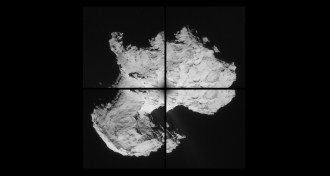 Astronomy
AstronomyRosetta’s comet shows few signs of surface ice
The first data sent back from one instrument aboard the Rosetta spacecraft suggests that comet 67P/Churyumov-Gerasimenko has little surface ice.
-
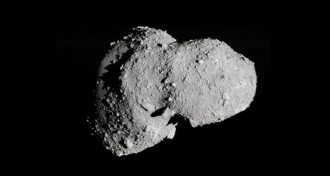 Planetary Science
Planetary ScienceTo explain asteroid composition, scientists invoke nuts
Brazil nut effect may explain why only large boulders dot surfaces of asteroids.
-
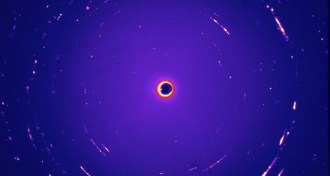 Astronomy
AstronomyDust nabbed by spacecraft may be from outside the solar system
NASA’s Stardust mission captured seven particles that probably come from interstellar space, providing researchers with the first direct samples from beyond the solar system.
-
 Planetary Science
Planetary ScienceSpacecraft films Pluto’s largest moon in orbit
New Horizons spacecraft, en route to Pluto, captures nearly one orbit of dwarf planet’s largest moon.
-
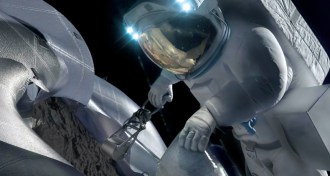 Planetary Science
Planetary ScienceNASA bets on asteroid mission as best path to Mars
NASA wants to bag an asteroid using robotic arms or an enormous sack and place the rock in the moon’s orbit for study. This may keep astronauts working but not, as NASA claims, get them Mars-ready.
By Meghan Rosen -
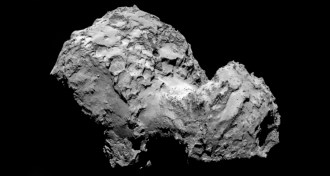 Planetary Science
Planetary ScienceRosetta spacecraft confabs with a comet
After a 10-year chase, ESA’s Rosetta spacecraft has met up with comet 67P/Churyumov–Gerasimenko.
-
 Planetary Science
Planetary ScienceThree volcanic eruptions rock Jupiter’s moon Io
Over two weeks last year, the tiny moon Io blazed with three vigorous volcanic eruptions.
-
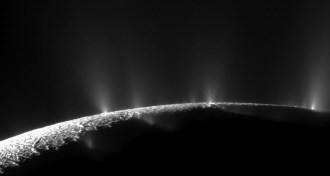 Planetary Science
Planetary ScienceSaturn moon’s geysers draw water from subsurface sea
More than six years of Cassini data indicate that the water jets on the surface of Saturn’s moon Enceladus connect to deep-ocean reservoirs via expanding cracks in surface ice.
-
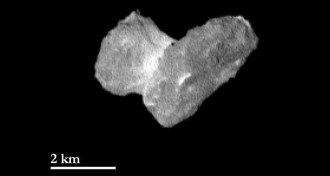 Planetary Science
Planetary ScienceRosetta spacecraft gets better view of comet’s fuzz
News images are giving astronomers a sense of the size of comet 67P/Churyumov-Gerasimenko's coma and the shape of its core.
-
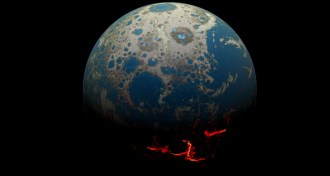 Earth
EarthEarly life probably fell victim to massive space rocks
Planet-sterilizing impacts probably snuffed out early life on Earth until around 4.3 billion years ago.
-
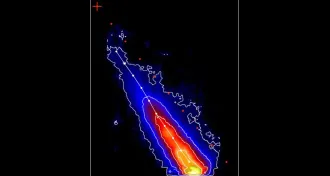 Planetary Science
Planetary ScienceComet ISON fell apart earlier than realized
Comet ISON disintegrated at least eight hours before it grazed the surface of the sun last fall, new observations show.
-
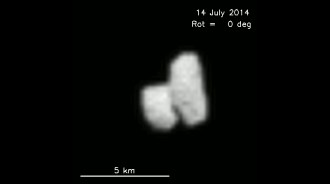 Planetary Science
Planetary ScienceRosetta spacecraft sees possible ‘double’ comet
The comet 67P/Churyumov-Gerasimenko may actually be two objects stitched together.